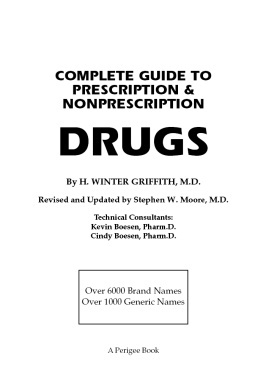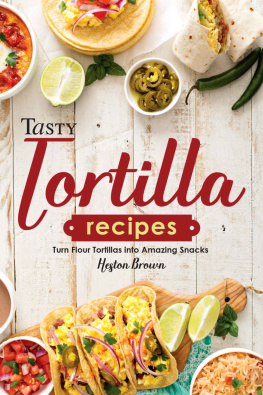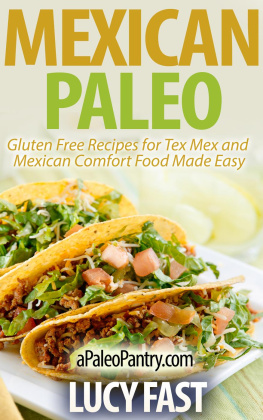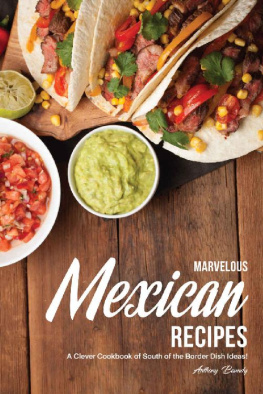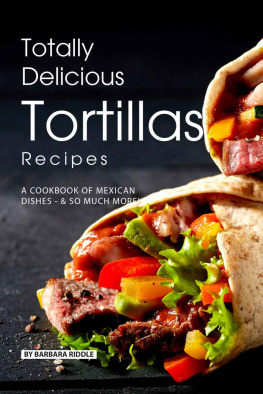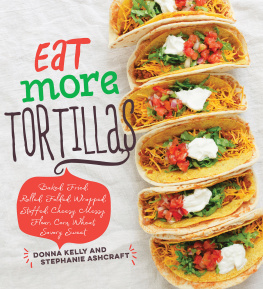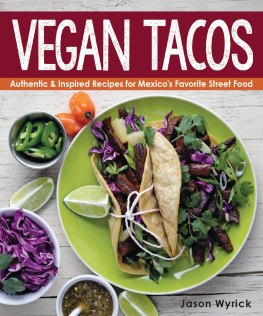What a fun book! First, Dotty Griffith begins with clear tutorials on making corn and flour tortillas from scratch, along with lots of creative variations on the basic form. (I cant wait to try her cilantro lime corn tortillas.) She then shares a host of recipes for using your homemade bountyeverything from tacos to enchiladas and soups to desserts. Tips, history, and corny jokes are peppered throughout, also making for an enjoyable read. If you're a fan of all things tortilla, this cookbook is a must!
Lisa Fain, blogger at Homesick Texan and author of The Homesick Texan Cookbook and Queso!
This book is the real deal for tortillas of all kinds as well as recipes using tortillas!
Sylvia Casares, chef/owner, Sylvias Enchilada Kitchen, Houston, and author of The Enchilada Queen Cookbook
Dotty Griffith has packed more about tortillas into one book that I thought possible. The Ultimate Tortilla Press Cookbook is the only reference youll ever need to make all kinds of great tortillas.
John Mariani, author of The Dictionary of American Food and Drink and The Encyclopedia of American Food and Drink
Making tortillas at home is an easy, rewarding, and tasty craft to master. Dotty Griffith has written the definitive book on the subject, covering not just tortillas but all the amazing things you can make with them.
Cheryl Alters Jamison, author of Texas Slow Cooker and co-author of Smoke & Spice and Texas Home Cooking
With this book, Dotty Griffith ushers in a new age for the ancient tortilla.
Elaine Corn, author of Now Youre Cooking and Now Youre Cooking for Company
Dotty Griffith has written the book Ive been waiting for all my lifeand the one I wish I had written first! This brilliant book is destined to become a classic. This book will appeal to the curious but inexperienced cook with recipes like the rich and creamy, but simple Avocado Crema. It will also lure those wishing to be true tortilla aficionados, as Dotty takes you carefully through nixtamalization, the process for treating and grinding dried corn into fresh masa. From chimichangas to chilaquiles, from salsas to sopes, this book has everything youll ever need to satisfy your cravings for all things tortilla.
Stephan Pyles, chef, restaurateur, and author of The New Texas Cuisine
the Ultimate
TORTILLA PRESS
COOKBOOK
Recipes for all kinds of make-your-own tortillasand for burritos, enchiladas, tacos, and more
DOTTY GRIFFITH

part
ABOUT TORTILLAS AND HOW TO MAKE THEM
THE FLAT LINE OF HISTORY
Tortillas Then and Now
Pre-Columbian tortilla history goes back an estimated 10,000 years to Mesoamerica, where Mayans made tortillas from ground corn. The Aztecs continued the tradition, as did the Incas in South America.
The modern history of tortillas dates back to the 1519 Spanish invasions and conquest of the area Europeans considered New Spain, or, more widely, the New World. Today, we know this area as Mexico. The Aztecs thought of it as home.
What was novel to Hernando Cortez and his conquistadores was the equivalent of sliced bread to the native Aztecs. Indigenous people had been making round flatbreads of ground corn doughwhat the Spanish named tortillasfor thousands of years. The Aztecs called their daily bread tlaxcalli (prononced las-CAL-e).
Todays tortillas arent just made from corn, however. In 1519, Jewsmany forced to convert or feign conversion to Catholicismsettled as far away from the Spanish capital as they could to avoid the Spanish inquisition as it played out in New Spain. They put down roots in what is now northern Mexico, from which flour tortillas emanated.
Jews who settled in what is today northern Mexico didnt consider corn as kosher; instead, they used wheat flour to make a flatbread-like tlaxcalli, as well as their staple matzo, or pita, depending on from where they immigrated. Flatbreads made from flour (i.e., flour tortillas) are the New World version of matzo.
Some Christian European transplants werent big on peasant corn either. They considered wheat flour more akin to the body of Christ (i.e., communion wafers), so they, too, were fine with appropriating native corn flatbread techniques to make wheat flatbread.
BANNED IN LUBBOCK
Tossing tortillas onto the field is one of five deadly sins that can get a Texas Tech University student kicked out of a college football game at this Texas panhandle school of higher learning. Tech students have been throwing tortillas after kickoff at least since 1992. Some still do. In case you wondered, flour (not corn) tortillas are the edible Frisbees of choice. What else can get you booted?
Consuming alcohol.
Being too drunk. (Perhaps numbers 1 and 2 are a little redundant?)
Wearing the colors of another team.
Smoking (anything).
HOLY TORTILLAS!
Regardless of the basic ingredientscorn masa or wheat flourused for the flatbreads we know today simply as tortillas, both are made using similar techniques. Tortillas begin with a simple dough of ground corn, called nixtamal. From nixtamal, ancient tortilla makers pinched off golf ball-size pieces and flattened them by hand or by rolling with a rod or pin, before toasting on a hot, flat surface known today as a comal or griddle.
What isnt simple is the miracle of nixtamalization, the process for the preparation of maize that the Mesoamericans discovered. The chemical changes that occur during nixtamalization makes the difference between cornmeal (ground dried corn that cant form a dough) and masa harina (ground nixtamalized corn that can form a dough). Corn meal requires the addition of flour and liquid to form a dough. With masa harina, just add liquid.
The chemical changes that occur make all the difference. To prepare nixtamal (the treated cornmeal), whole kernels of dried corn are soaked and cooked in a slaked lime or alkaline solution made with calcium hydroxide, called cal for short (see ). Whole kernel nixtamal is also known as posole or hominy.
Fresh ground nixtamal is seldom used by modern home cooks because making it is a tedious and time-consuming process. Also, fresh nixtamal sours quickly. But if you live in an area where tortilla factories are accessible, you may be able to buy fresh nixtamal by the pound. Whether you make it or buy it, keep fresh nixtamal refrigerated and use within twenty-four hours.
On the other hand, masa harinamade from dried, ground nixtamalis shelf stable and easily stored in bags. This is the form most commonly used by modern home cooks and is widely available in supermarkets, Hispanic groceries, and online through various sources.




